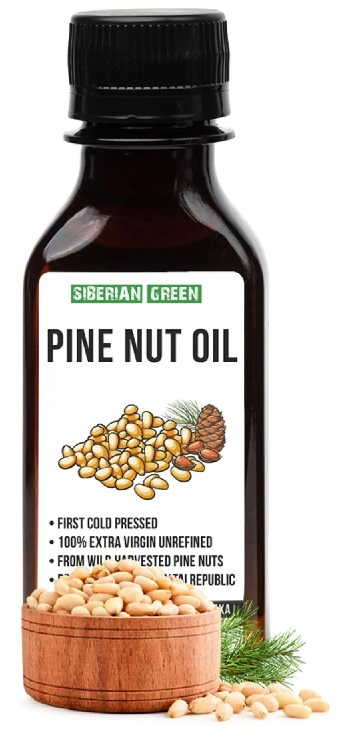Borage, blackcurrant or evening primrose oils for Omega-6 DGLA

What is Omega-6 DGLA?
Local “Hormones”-“First Response Team”- Affect pain/ inflammation, muscles, blood pressure, clotting . . .
Effects of the anti-inflammatory PGE1:
- Reduce inflammation and pain
- Reduce blood pressure
- Relax muscles /dilate blood vessels / control uterine contractions
- Improve immune response
- Reduce blood stickiness
- Regulate nerve impulses, body temperature and fluid levels
Omega-6 DGLA is only directly available in mother's milk
For those of us who are no longer obtaining milk from our mothers, DGLA can be obtained by supplementing with GLA fatty acids. These are found in quantity in evening primrose, borage and blackcurrant oils; GLA is easily converted to DGLA in the body;
DGLA production from GLA is enhanced when high levels of alpha-linolenic acid are present, blocking the arachidonic acid pathway.
Omega-6 GLA is not found in high levels in the diet and some people cannot efficiently convert Omega-6 LA (obtained from such as vegetable oils, nuts and seeds) to derivative DGLA in the step requiring the hepatic Δ6D enzyme. GLA supplementation thus compensates for the lack of GLA in those with impaired Δ6D activity,
Inhibitors to Δ6D conversion ENZYMEs
Altered Fats. Such as found in margarine, shortening and other processed or heated oils.
Lack of vitamin B6, Magnesium and Zinc)
Cholesterol and Long-Chain Saturated Fat (from meat and dairy) compete for conversion enzymes).
LA to ALA Imbalance (LA and ALA compete for enzymes).
Sugar, Chemicals, Caffeine
Excessive PALMITOLEIC fatty acids. A MUFA significantly found in milk and tropical oils.
Age (over 30) – enzyme production diminishes with age; Health problems (E.g. Diabetes).
Alcohol, drugs, stress, high INSULIN, environmental chemicals.
Ancestry accustomed to a high fish diet (E.g. Inuit, Oriental, West Coast N. American native, Norwegian).
GLA Supplementation
Omega-6 GLA works synergistically with Omega-3
Omega-6 GLA supplementation should not be given until Omega-3 deficiency has been dealt with. Until Omega-3 levels have been increased, supplementing GLA will make the imbalance worse in a probably already oversupplied Omega-6 diet. If cancer is present, this is especially important, because Omega-6 enhances tumor growth, and Omega-3 suppresses growth.
GLA is best supplemented together with omega-3. Co-supplementation of GLA with EPA lowers blood AA levels. It does this by blocking the Δ5D enzyme; also lowers neutrophil leukotriene synthesis. Barham, 2000
In most cases, Omega-3 supplementation has shown equally effective to supplementing Omega-6
Results have been comparable between Omega-3 and Omega-6 supplementation for many problems and diseases in extensive, controlled, hospital /clinic, double-blind studies world-wide. This according to Dr. Udo Erasmus Ph.D, renowned expert on dietary fats and author of “Fats that Heal, Fats that Kill”.
There are two exceptions where GLA supplementation gives better relief than omega-3:
- Premenstrual breast pain and premenstrual syndrome symptoms. i.e. bloating, irritability, depression;
- Sjogren’s syndrome (drying/atrophy of tear/salivary glands);
Some applications of GLA-rich oils
Borage Oil
Skin applications
- 20% borage oil reverses hyperproliferation (skin cells regenerate too fast) better than EPO. Increases ceramide synthesis in guinea pigs
- Borage oil NOT shown effective for eczema
- Topical application of borage oil reduces symptoms of atopic dermatitis in double-blind placebo-controlled study. Kanehara, 2007
- Borage oil helps hydrate elderly skin
Reports that Borage seed oil contains toxic pyrrolizidine alkaloids have been found to be false. These problematic compounds have limited the use of comfrey leaves, however, they are only present in the leaves and flowers (not the seeds) of the borage plant, and in much lower amounts than in comfrey.
Shelf life ~6 months. Courtesy of the oil’s inherent 400 ppm tocopherols combined with the anti-oxidant ferulic acid;
Evening Primrose Oil (EPO)
Problems where EPO has been found particularly helpful. Results seen after 3-4 months
- Atopic eczema. Use 6–8 g EPO/day; may not be effective topically
- Cyclic and non-cyclic mastalgia (breast pain) – 3-4g EPO/day
- PMS, psoriasis, M.S.
- Hypercholesterolemia. 2-3 g GLA/day
- Rheumatoid arthritis. 3g GLA /day
- Raynaud’s phenomenon
- Sjogren’s Syndrome
- Asthma
- Diabetic neuropathy
References
Problem-specific Omega-6 Supplementation Doses: | ||
|---|---|---|
| Generally 600 mg. Omega-6 GLA / day up to max 3g / day | ||
| Health-beneficial oils are organic, cold-pressed, and unrefined | ||
| Oil | % GLA | Dose size |
| Evening Primrose Oil (EPO) | ~9% GLA | 1 tsp. provides 460mg GLA/ day |
| Borage Oil (BO) | ~20-25% GLA | 1000 mg capsule provides ~ 230 mg GLA ¼ tsp. provides ~ 280 mg GLA |
| Blackcurrant Seed Oil (BSO) Unrefined BSO is hard to find | ~17% GLA | 1000 mg capsule provides ~ 200 mg GLA. |
WARNING: Drug interaction: Omega-6 supplementation may increase the risk of temporal lobe epilepsy in schizophrenic patients taking phenothiazine epileptogenic drugs.














